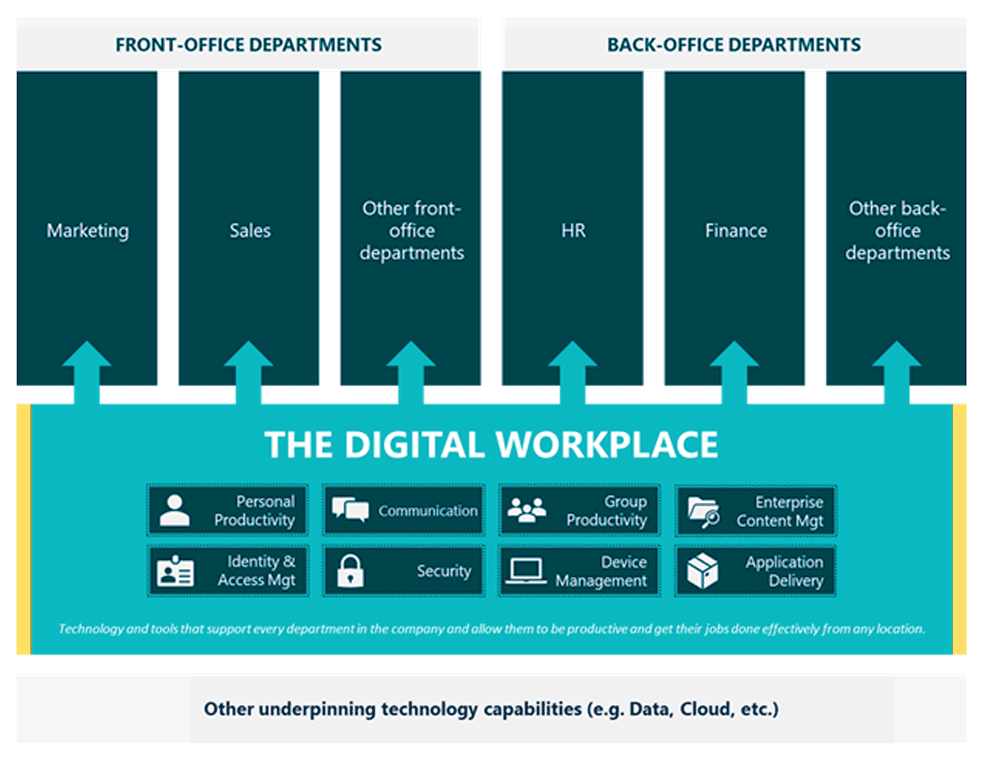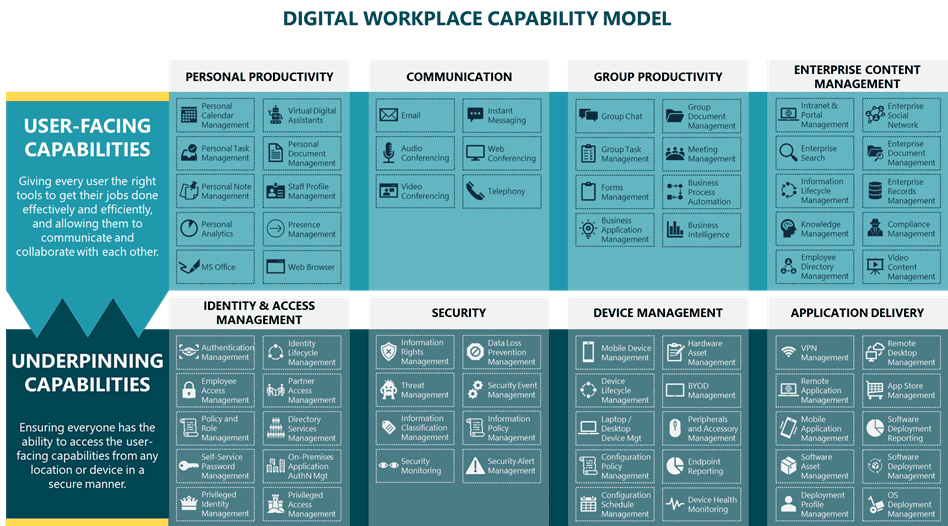A Digital Workplace capability model like that above is a useful tool to drive your technology roadmap definition. It’s unlikely any organisation will be in a budgetary position to implement and mature all of these capabilities in one fell swoop (indeed, even attempting a transformation this enormous would usually be a fool’s errand). However, understanding where your most significant pain points are, where you would gain the most benefit, and where you are least mature in comparison to other companies is a great place to start.
You can start to build a roadmap of transformation initiatives, supported by a well-defined operating model for the Digital Workplace, and make incremental improvements that will stack up and revolutionise your business over time. Choosing which capabilities to light up and when on this capability model is something we can help with. After this, it’s all about standing up the right programmes of work, operating models, and governance structures to run the Digital Workplace long-term.










